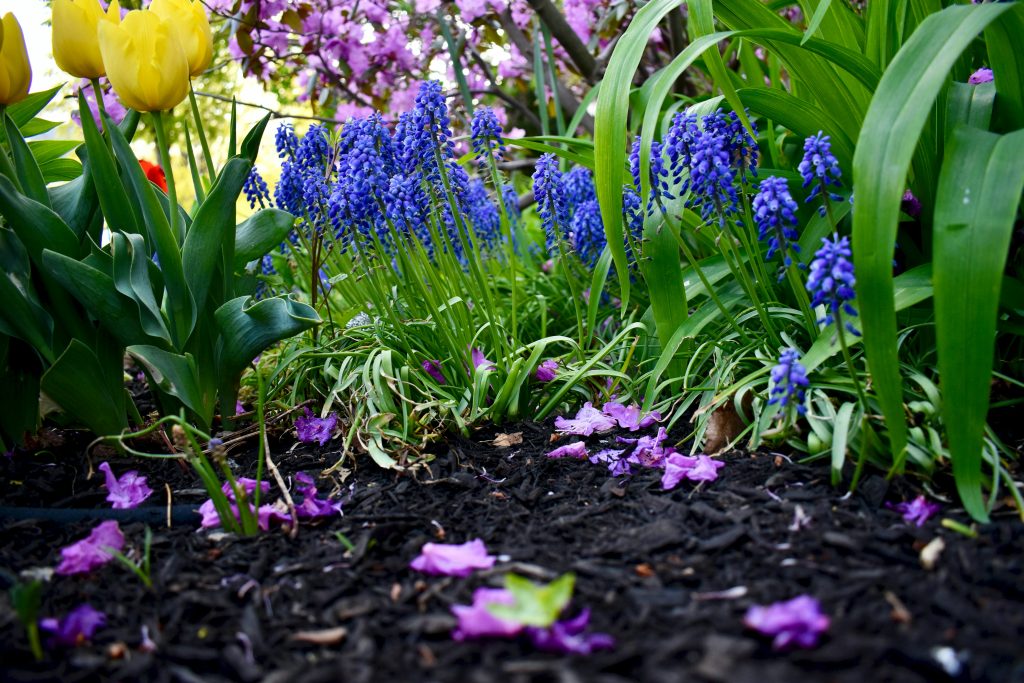Black Mulch – The Good and the Bad
Ah, the enigmatic allure of black mulch in the garden! It’s like the LBD (Little Black Dress) of landscaping—sophisticated, versatile, but with its own set of quirks and controversies. Let’s delve into this mysterious realm, shall we?
What is Mulch?
First things first, darlings, what exactly is mulch? Picture it: a luxurious layer of organic goodness that cozies up the ground around your precious plants, shielding them from the harsh realities of weed invasions and moisture loss. It’s like tucking them in with a warm blanket, only fancier.

What is Black Mulch?
Now, onto the star of the show: black mulch. But wait, there’s a twist! It’s not just one type; it’s a trio of dark delights.
Types of Black Mulch
First, we’ve got black bark mulch, recycled from old furniture and pallets (talk about upcycling chic!), black plastic mulch straight out of the commercial nursery playbook, and last but not least, black rubber mulch, crafted from the humble old tire. Who knew old tires could bring so much to a landscape!
Pros
Pros? Oh, they’re aplenty, my dear readers. Picture-perfect aesthetics? Check. Heat retention for a prolonged growing season? Absolutely. Weed suppression? You betcha. And let’s not forget its knack for water retention—hydrating your precious flora like a spa day for plants.
Cons
But ah, like any irresistible temptation, this mulch has its cons, too. It can put a dent in your wallet, and tracking it down can be as elusive as a principled politician. Then there’s the little matter of rodents—apparently, they find the stuff as alluring as we do. Plastic mulch, while durable, poses a disposal dilemma, and the heat-absorbing tendencies of the black hue might stress out your delicate blooms.

And let’s not ignore the fashion faux pas potential. That sleek black color? It’s not just for show—it can leave its mark on your hands and clothes, so we do recommend using gloves.
Is it Safe for Dogs and Vegetable Gardens?
But what about our furry friends, you ask? Ah, yes, safety around pets is paramount. Mulch might look delicious to Fido, but it’s a big no-no on the canine menu. And let’s not forget the issue of chemical leaching—while deemed safe, there’s always a whisper of concern about what lurks beneath the surface, especially when it comes to veggies.

In the end, my dear readers, black mulch is like that intriguing stranger you can’t help but be drawn to—mysterious, alluring, but with a few red flags waving in the wind. Proceed with caution, weigh the pros and cons, and remember: in the garden of life, sometimes the most unexpected choices lead to the most beautiful blooms.
Black mulch, with its mysterious allure and undeniable charm, is like the enigmatic stranger in the garden—captivating, but not without its complexities and controversies. As we continue our exploration of this dark delight, let’s delve deeper into its nuances and examine its impact on our green sanctuaries.
Practical Considerations and Maintenance Tips
Despite its allure, black mulch requires careful maintenance to preserve its aesthetic appeal and functionality. Regular replenishment may be necessary to combat fading and decomposition, especially in high-traffic areas or under intense sunlight. Additionally, vigilant weed management is essential to prevent unwanted vegetation from infiltrating mulched areas.
Remember, gardeners should be mindful of the heat-absorbing properties of black mulch, which can impact soil temperature and moisture levels. In regions with hot climates, excessive heat retention may pose challenges for certain plant species, necessitating strategic watering practices and shade provisions.
In conclusion, the allure of black mulch in the garden is undeniable, but it is not without its complexities and considerations. As conscientious stewards of the earth, gardeners must weigh the aesthetic appeal, practical benefits, and potential drawbacks of black mulch against their commitment to environmental sustainability and pet safety. By approaching landscaping decisions with mindfulness and foresight, we can cultivate gardens that are not only visually stunning but also harmonious with nature.
